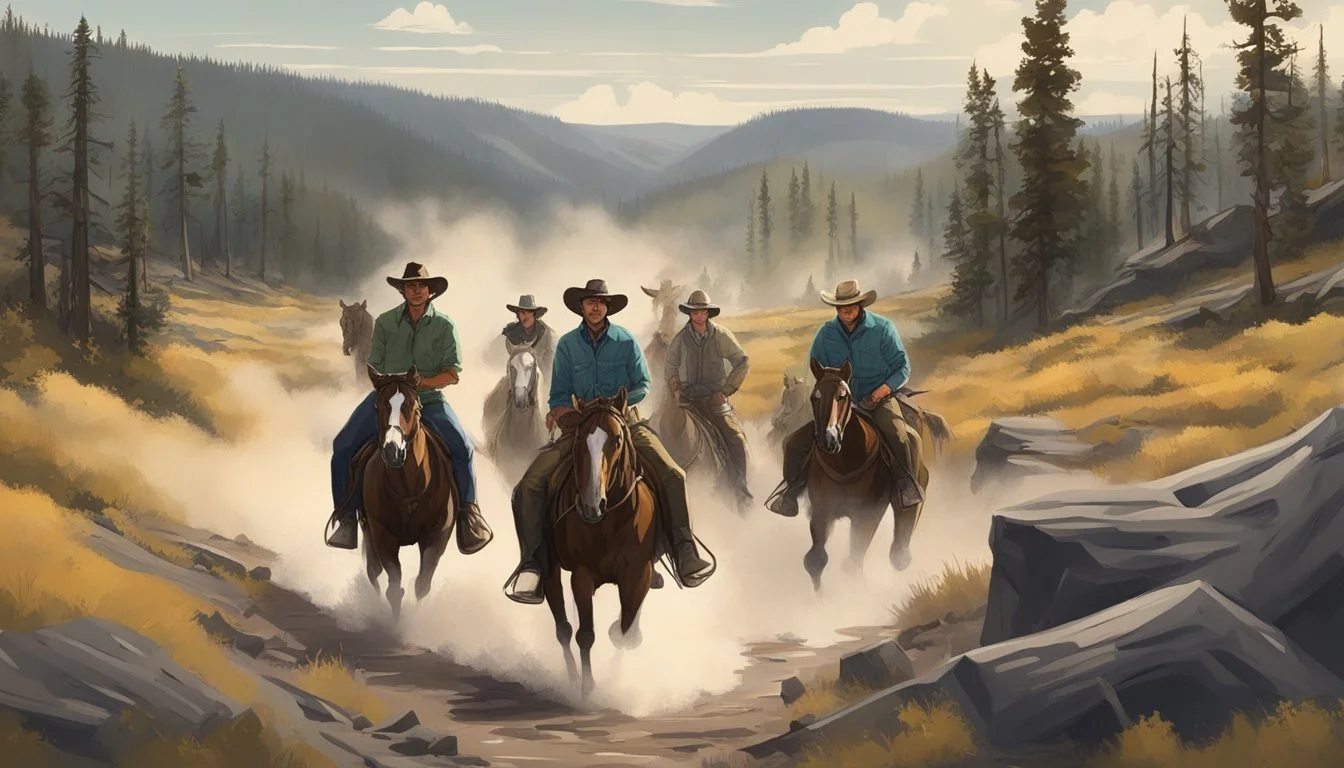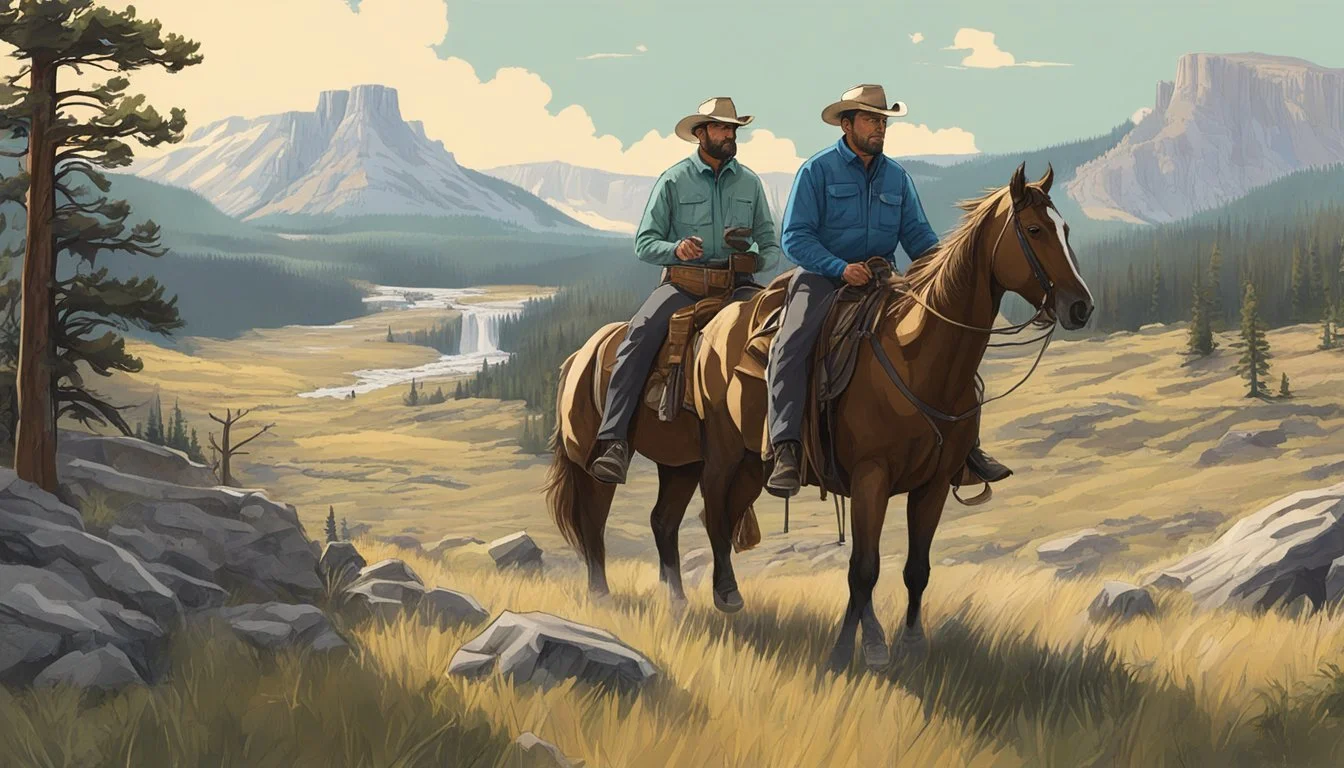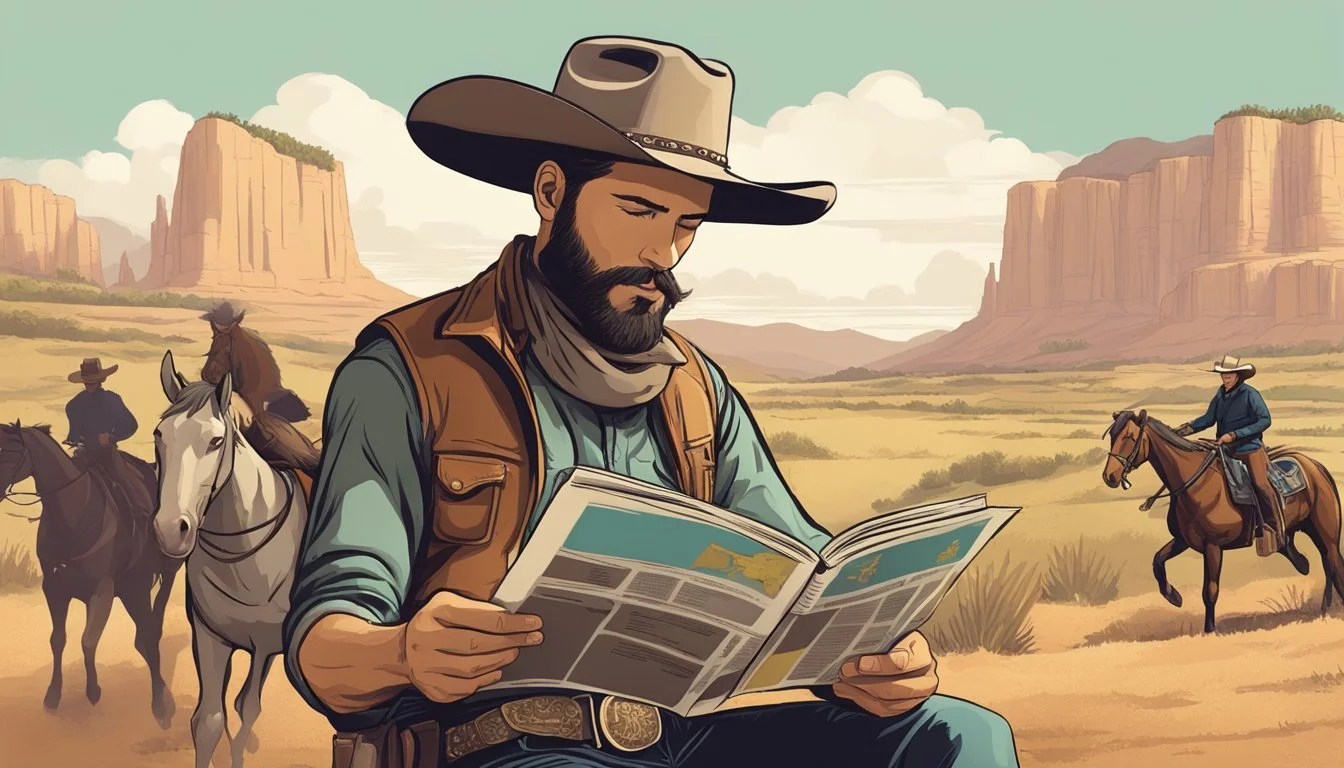Local Journalists Fight to Save Yellowstone's Heart Amid Digital Media Chaos
Local media plays a vital role in shaping public perceptions of Yellowstone National Park and its surrounding communities. Small-town newspapers and regional outlets provide unique insights into the park's management, conservation efforts, and economic impacts that larger national media often overlook. These local voices offer invaluable perspectives on Yellowstone's challenges and opportunities, connecting readers to the heart of issues affecting the park and nearby towns.
The digital age has brought both opportunities and challenges for community journalism near Yellowstone. While online platforms allow local news to reach wider audiences, they also face competition from larger media outlets and social media. Nevertheless, the advantage of local presence remains strong. Community newspapers continue to foster engagement, promote transparency, and support economic growth in the Yellowstone region.
As trust in mainstream media wavers, local journalism near Yellowstone serves as a beacon of reliability. By focusing on stories that directly impact residents and visitors, these outlets build credibility and maintain strong connections with their audiences. This hyper-local approach helps preserve the social and cultural fabric of communities surrounding one of America's most iconic national parks.
Historical Context of Local Media in Yellowstone
Local media has played a vital role in shaping perceptions of Yellowstone National Park and its surrounding communities for over a century. The evolution of journalism in this region reflects broader trends in small-town reporting and the challenges faced by rural news outlets.
From Print to Digital: Transition Over Time
The Yellowstone Journal, established in 1881, exemplifies the transformation of local media. Initially catering to cattlemen and ranchers, it expanded its coverage to include community stories and regional events. As technology advanced, newspapers like The Yellowstone Journal adapted their formats and distribution methods.
Print editions gradually gave way to digital platforms, allowing for faster news dissemination and wider reach. This shift enabled local journalists to compete with larger media outlets and provide real-time updates on park-related issues.
Small-Town Journalism's Role in Local History
Local newspapers have been instrumental in documenting Yellowstone's history and the development of nearby communities. These publications served as primary sources for recording significant events, such as the 1988 Yellowstone fires.
Small-town journalists often provided nuanced perspectives on park management decisions and their impact on local economies. Their coverage helped shape public opinion and fostered community discussions on conservation efforts and land use policies.
The Decline of Daily Newspapers and Rise of News Deserts
Recent decades have seen a decline in daily newspapers across rural America, including the Yellowstone region. Economic pressures and changing reader habits have forced many publications to reduce frequency or cease operations entirely.
This trend has led to the emergence of news deserts - areas with limited access to local journalism. The loss of community newspapers has significant implications for civic engagement and local government accountability.
To combat this issue, some Yellowstone-area communities have embraced digital-only news platforms and citizen journalism initiatives. These efforts aim to maintain a robust local media presence in the face of industry-wide challenges.
Community Engagement and Local News
Local media outlets serve as vital information hubs, fostering community connections and shaping public discourse. They provide platforms for residents to engage with local issues and decisions that directly impact their lives.
Building an Information Nexus through Journalism
Local news organizations act as central information sources for Yellowstone communities. They cover town hall meetings, school board decisions, and local events. These outlets give voice to community concerns and highlight grassroots initiatives.
Reporters develop deep local knowledge, allowing them to contextualize issues for readers. This expertise helps citizens understand complex topics like wildlife management or tourism impacts.
Many local outlets now use social media and websites to share breaking news and encourage reader interaction. Online comments sections and community forums extend conversations beyond print editions.
Public Opinion and Community News
Local media significantly influences public opinion on Yellowstone-related issues. News coverage frames debates around park management, conservation efforts, and economic impacts.
Editorials and opinion pieces provide platforms for community leaders and residents to share perspectives. These forums can shape local government policies and decisions.
Reader polls and surveys conducted by news outlets gauge public sentiment on key issues. Results often inform local officials and park managers about community priorities.
Fact-Checking and Trust in Local News
Small-town journalists play a crucial role in verifying information and dispelling rumors. They fact-check statements from local officials and investigate community concerns.
Many outlets have established fact-checking processes to ensure accuracy in reporting on complex Yellowstone ecosystem issues. This commitment to truth builds reader trust.
Transparency about sourcing and corrections helps maintain credibility. Some news organizations host "trust-building" events to engage directly with readers and explain journalistic practices.
Local reporters' long-standing community ties often lead to higher trust levels compared to national media outlets.
Business Models for Online News
Digital platforms have disrupted traditional revenue streams for local news outlets, forcing them to explore new business models. Successful strategies often involve diversifying income sources and adapting content for online audiences.
Surviving in a Digital Market: Revenues and Adaptability
Many local news sites are shifting to subscription-based models. Paywalls and membership programs can provide steady income from dedicated readers. Digital advertising remains important but faces challenges from tech giants.
Some outlets find success with sponsored content or native advertising. Events and merchandise sales offer additional revenue streams. Grants and crowdfunding campaigns can support specific reporting projects.
Data analytics help news sites tailor content and pricing strategies. Mobile-friendly designs and social media engagement are crucial for reaching younger audiences. Collaboration with other local outlets can reduce costs and expand coverage.
The Challenge of Competing with Metropolitan Journalism
Small-town news sites struggle to match the resources of large metropolitan outlets. Limited staff and budgets make it difficult to produce high-quality investigative reporting.
Local expertise and community connections give small outlets an edge in covering hyperlocal issues. Focusing on unique local stories helps differentiate from national competitors.
Partnerships with larger news organizations can provide access to advanced tools and wider distribution. Some local sites find niches in specialized topics like environmental reporting or cultural coverage.
Building trust through transparent practices and community engagement is essential for small outlets. Emphasizing local impact and relevance can attract and retain subscribers in competitive markets.
Geography's Influence on Media
Geography shapes how local media outlets operate and connect with their audiences. Physical landscapes and population distributions create unique contexts for journalism in different regions.
Geomedia: Connecting Audiences to Their Territory
Geomedia refers to location-based content that links news and information to specific places. Local outlets near Yellowstone use geomedia to cover park-related issues that directly impact nearby communities. They report on wildlife migrations, thermal features, and visitor patterns in ways that resonate with local residents.
Digital mapping tools allow journalists to create interactive visualizations of geographic data. These help readers understand spatial relationships between news events and their surroundings. For example, a map showing wildfire spread near park boundaries contextualizes the threat to different towns.
Social media geotagging enables real-time reporting from precise locations within the Yellowstone region. This allows news organizations to quickly gather and share information about developing stories across a vast territory.
Local Press in Rural vs. Urban Settings
Rural media outlets face unique challenges and opportunities compared to their urban counterparts. Small-town newspapers near Yellowstone often have deeper community connections but fewer resources.
In rural areas, local journalists frequently wear multiple hats - reporting, editing, and even delivering papers. This versatility allows them to develop comprehensive knowledge of regional issues. However, limited staff can make it difficult to cover all relevant stories.
Urban media tend to have larger newsrooms and more specialized roles. They may dedicate reporters specifically to environmental or tourism beats related to Yellowstone. This specialization can produce more in-depth coverage of complex park management topics.
Rural outlets often rely more heavily on community submissions and citizen journalism. This grassroots approach can provide authentic local perspectives on Yellowstone's impact. Urban media may have less direct reader input but more access to official sources and experts.
Local Newspapers in the Era of Social Media
Social media has transformed how local newspapers operate and engage with their communities. Digital platforms present both challenges and opportunities for small-town journalism in Yellowstone and beyond.
Social Networks as Competitors and Allies
Facebook, Twitter, and Instagram compete for readers' attention and advertising dollars. Local newspapers must adapt their strategies to remain relevant. Many papers now use social media to share breaking news, promote stories, and interact with readers. This online presence helps newspapers reach younger audiences and drive traffic to their websites.
Some papers partner with social networks to expand their reach. They may create Facebook groups for community discussions or use Twitter for live event coverage. These collaborations can boost engagement and subscriptions.
The Evolution of News Coverage in the Age of Digital Platforms
Digital platforms have changed how local newspapers gather and report news. Reporters now use social media to find story leads and sources. They often share updates in real-time through tweets or live videos.
Reader-generated content, like photos and eyewitness accounts, enhance coverage of local events. Papers increasingly rely on data analytics to understand which stories resonate with their audience. This information shapes editorial decisions and content strategies.
Mobile-friendly formats and multimedia elements make stories more engaging for digital readers. Despite these changes, local newspapers still prioritize accuracy and in-depth reporting to distinguish themselves from less reliable online sources.
Adapting to Technological Change
Local media outlets in Yellowstone are embracing digital tools and platforms to stay relevant in the rapidly evolving media landscape. These adaptations aim to enhance reporting capabilities and maintain strong connections with their audiences.
Incorporating Digital News Trends into Local Reporting
Local journalists in Yellowstone are leveraging new technologies to improve their reporting. Many have adopted mobile journalism techniques, using smartphones to capture high-quality video and audio in the field. This allows for quicker, more immediate coverage of breaking news events.
Social media platforms like Twitter and Facebook are now integral to news gathering and dissemination. Reporters use these tools to source leads, connect with community members, and share updates in real-time.
Data journalism is gaining traction, with newsrooms using publicly available datasets to create interactive visualizations about park visitation trends, wildlife populations, and environmental changes.
Maintaining Audience Engagement Amidst Media Shifts
To keep readers engaged, local media outlets are diversifying their content formats. Many now produce podcasts featuring in-depth interviews with park rangers, scientists, and community leaders. These audio programs offer a new way to explore Yellowstone's stories.
Email newsletters have become popular, delivering curated local news directly to subscribers' inboxes. These often include exclusive content or early access to stories, incentivizing digital subscriptions.
Some outlets have experimented with virtual reality tours of Yellowstone's geothermal features or wildlife habitats, providing immersive experiences for audiences unable to visit in person.
Interactive web features, such as quizzes about park history or wildlife identification games, help to educate and entertain readers while boosting site engagement metrics.
The Future of Local Journalism
Local journalism in Yellowstone faces both challenges and opportunities as it adapts to the digital age. New technologies and changing reader habits are reshaping how community news is produced and consumed.
Predicting the Next Wave of Community Media
Digital platforms are likely to play an increasingly central role in local journalism. Many small-town news outlets are experimenting with mobile apps, social media channels, and interactive websites to reach readers.
These tools allow for more real-time reporting on Yellowstone events and issues. Citizen journalism may also grow, with residents contributing photos, videos, and eyewitness accounts.
Data-driven reporting could become more common as local outlets gain access to advanced analytics tools. This may lead to more in-depth coverage of trends affecting the Yellowstone community.
Innovation in Local News Outlets
Some local news organizations are exploring new business models to ensure financial sustainability. These include nonprofit structures, membership programs, and partnerships with larger media entities.
Collaborations between outlets could become more prevalent, allowing for resource sharing and expanded coverage. Hyperlocal news sites focused on specific Yellowstone neighborhoods or topics may emerge.
Mobile-first design is likely to be a priority as more readers access news on smartphones. Outlets may invest in multimedia storytelling techniques like podcasts and virtual reality to engage audiences.
Opinion Pieces and Their Impact on Local Media
Opinion content may evolve to include more diverse voices from the Yellowstone community. Local outlets could create dedicated spaces for resident perspectives on park issues and town developments.
Interactive features like online polls and comment sections may enhance engagement with opinion pieces. This could foster more robust public dialogue on local matters.
Some outlets might experiment with video op-eds or live-streamed town halls to bring opinion content to life. Fact-checking initiatives could be implemented to ensure accuracy in opinion pieces about Yellowstone topics.






